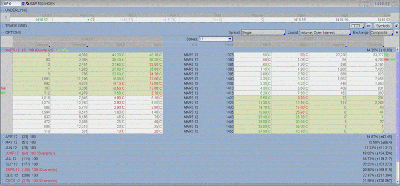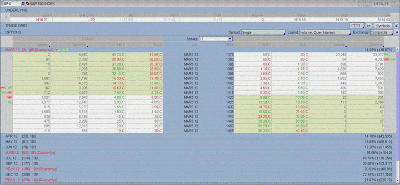Josip Causic of Online Trading Academy uses a real option trade gone badly to explain the dilemma option traders face when deciding whether to “fix” a losing trade or simply close it for a loss.
How often would we fix a brand new car after it has been in a collision? The answer might vary, but eventually, it comes down to the severity of the collision and the mathematical calculation of the cost. The question to answer is this: Is it more economical to simply replace a damaged vehicle with a different one or fix the existing one?
What does a car collision have to do with trading? Like a brand new car, a brand new trade could derail virtually overnight. And in that case, do we fix it?
Let us assume that we do fix it and then it goes bad on us again. What do we do then, the second time around? Do we fix a car that had two collisions in a row? Perhaps it is wiser simply to accept the fact that the trade was a losing trade and not throw more money in a bad trade.
Again, which choice would be made truly depends on the specifics; hence, let us look at one specific trade. We will use a live example rather than some theoretical XYZ illustration. Figure 1 below shows an iron condor on the March quarterly Standard & Poor’s 500 cash-settled index:
The above figure shows a snapshot three days prior to the expiry. The white lines show the out-of-the-money options. The small rectangles with POS on them show the existing trade. Red POS indicates sold leg and green POS is long.
On the put side, next to the red POS, is also a green rectangle with BUY, which means that I am attempting to close the sold put for a nickel. On the call spread, there are no closing orders because SPX has gone above my 1410/1415 spread on both legs bought and sold. Is that a problem? Well, it all depends on what the market does next.
SPX is considered a European-style index, meaning that it can get assigned and exercised only after the expiry. What truly matters is not where the price is right now, three days before the expiry, but where the price is going to close upon expiry.
Let us chronologically go over the trade. On Friday, the trade was opened and a credit was received on a five-point spread, which was quite rich, yet the range between the sold strike prices was dangerously tight.
Over the weekend, the trade benefited from time decay, yet due to Fed chairman Ben Bernanke’s remarks on Monday, all of the market averages rallied, including SPX, and by day’s end, two out of four legs were in the money.
How do we repair something like that, or could we repair it at all? If I were about to repair this, what exact strategy would be used?
Article Continues on Page 2...
|pagebreak|A possible strategy would be a call condor, but before delving deeper into this, let us go over another disclaimer. Be aware that every time a repair takes place, it actually represents a completely new trade with a new set of commissions. To repair an iron condor that had a bear call spread crushed, the spread would have to be repurchased at a higher premium than what the entire iron condor had sold for.
In other words, initially, the bear call was sold with both legs being out of the money (OTM), but they are now in the money (ITM). Figure 2 below shows the working order to close the existing bear call:
In this case, to close just the bear call would cost more than the entire credit for the original iron condor. But wait, as they tend to say on the TV infomercials, the bull put is still open and has a spread maintenance of five points times the contract size. Due to the volatility zigzag over the past week, could it be that both extremes are hit?
Frankly, in financial markets, anything is possible. Just recall the May 6, 2010 “flash crash.” Anyhow, assuming that the bull put is eliminated by buying to close its short legs for an insignificant cost of a dime or nickel, then the total loss goes up a bit.
Next, let us turn to our repair, which would be opening another bear call at the higher strike prices for a credit that is greater than the total loss, the big one from the bear call side and the tiny one from the bull put side.
Looking back at the previous figure, we can observe that the there are four orders simultaneously working. The first one, buying the 1410, and the second one, selling the 1415, together eliminates the initial 1410/1415 bear call. The next two legs, the selling of the 1420 call and the buying of the 1425 call, would open another bear call. When these four call orders are placed simultaneously, it is called a “call condor.”
In summary, what that call condor would do to our original trade would erase the loss and possibly make a small gain if the price does not go any higher but remains below the sold 1420 call. However, this is only one perspective on the trade.
Another point of view could be seeing the initial iron condor as a losing trade followed up by a completely separate trade which was a winning trade, with the average of the two trades being slightly green, depending on the fill. The trader’s ultimate choice is: “To fix or not to fix?” After reviewing all available information, now you must decide for yourselves.
See also: How to “Fix” a Bad Stock Trade with Options
By Josip Causic, instructor, Online Trading Academy
Do you “fix” your option trades when they are not working as well as you’d like? Let us know in the comments section below.






















